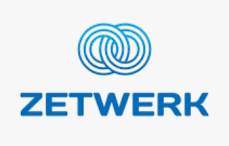-
70% of users hoard 2–3 unused phones at home, signaling a massive untapped resale opportunity.
-
33% of users sold old devices to fund their next phone, while 40% were motivated by competitive buyback offers.
-
3 in 5 refurbished buyers chose iPhones, highlighting growing trust and premium aspirations.
-
Refurbished demand is shifting from budget models (<₹10K) to ₹15K–₹30K and ₹60K+ categories.
-
Apple leads refurbished sales with 64.5% in 2024 and 62.9% in H1 2025, followed by OnePlus (10.2%), Xiaomi (9.7%), and Samsung (6.1%). Vivo showed the fastest growth, rising from 2.1% in 2024 to 3.2% in H1 2025.
-
Cashify launches India’s first Ease of Repair Ranking, assessing brands by spare-part availability.
India, 25th September, 2025 – With the global refurbished smartphone market set to reach $219.7 billion by 2033, India is poised to emerge as a global hub for circular tech innovation. Cashify’s 2025 whitepaper provides the most comprehensive view of this transformation. Cashify, India’s leading recommerce platform, launched its annual whitepaper “The Great Indian Upgrade 2025”, offering the most comprehensive view yet of India’s fast-growing second-hand smartphone market and consumer behavior. Combining insights from 10,000 survey respondents, Cashify’s proprietary marketplace data, and external reports from IDC, Counterpoint, and Canalys, the study highlights how refurbished smartphones, organized trade-ins, and certified resale programs have moved from niche adoption to mainstream culture.
While trade-in programs and resale offers have made old phones more valuable than ever, the reality is that millions of devices still lie idle in drawers, depreciating in value, when they could be extending their life in someone else’s hands. This untapped “Drawer Economy” represents billions of rupees in potential value recovery and a massive opportunity to reduce e-waste.
India’s Resale Revolution: From Hoarding to Habit
-
70% of Indian users admit to hoarding 2–3 unused phones at home, signaling billions of rupees in untapped value—the “Drawer Economy.”
-
33% of consumers now sell their old phones to fund upgrades, while 40% are motivated by competitive buyback offers.
-
63% of sellers dispose of old devices within six months of upgrading, reflecting growing acceptance of trade-in culture.
-
Despite this, 77% of resale still happens informally through grey channels, underscoring the need for trusted, transparent platforms.
Premiumization & Consumer Shifts
-
India shipped 151 million smartphones in 2024 (+4% YoY) with ASPs rising to ₹22,100, reflecting mid-premium and premium demand.
-
Apple shipments surged 35% YoY, making India its fourth-largest market globally.
-
3 in 5 refurbished buyers in H1 2025 chose iPhones, with sustained demand for iPhone 14 Pro, iPhone 13 Pro Max, and iPhone 12 Pro driving the ₹60K+ refurbished segment, which grew 33% YoY.
-
Refurbished demand in 2025 is shifting from budget (<₹10K) toward the ₹15K–30K mid-range and premium ₹60K+ price bands, reflecting India’s growing appetite for affordable premium smartphones.
Market & Brand Trends
-
Apple dominates resale with 64.5% of refurbished sales in 2024 and 62.9% in H1 2025, along with 33% of trade-ins.
-
Xiaomi (9.9% → 9.7%), OnePlus (10.9% → 10.2%), and Samsung (5.7% → 6.1%) follow, with vivo showing the fastest rise from 2.1% in 2024 to 3.2% in H1 2025.
-
Delhi, Bangalore, and Mumbai lead in trade-ins and purchases, but tier-2/3 cities are catching up fast, signaling nationwide adoption.
Top-Selling Brands in Refurbished Sales
|
Brand Name |
Jan-Dec 2024 |
Jan-Jun 2025 |
|
Apple |
64.5% |
62.9% |
|
OnePlus |
10.9% |
10.2% |
|
Xiaomi |
9.9% |
9.7% |
|
Samsung |
5.7% |
6.1% |
|
vivo |
2.1% |
3.2% |
|
OPPO |
1.9% |
2.4% |
|
Realme |
1.9% |
1.9% |
Repairability, Sustainability & E-Waste
-
Cashify has launched India’s first Repairability Index, ranking brands by spare-part availability and repair scores—tackling one of the biggest barriers to extending device lifecycles.
-
57.9% of consumers prefer repair over replacement if feasible, but challenges like cost (53.2%) and part shortages persist.
-
Cashify’s “repair-first, recycle-always” model, supported by 200+ physical stores, a 10,000+ retailer network, and AI-powered 80,000 sq. ft. refurbishment facility, addresses this gap.
Consumer Behavior Insights
-
76% of consumers who said they knew what refurbished means could define it correctly as “like new – tested and repaired by experts.”
-
Of all people who bought refurbished devices, 60% bought Apple.
-
Purchase price range is moving upward: 32.4% paid between ₹21K–35K, while 17.1% spent over ₹50K on refurbished models.
-
Drivers: 50.8% cite ‘like new at lower cost,’ 32.4% budget fit, and 8% sustainability.
-
Trust enablers: 52.5% want a 12-month warranty, 16.9% prefer detailed reports, and 16.9% value “try before you buy.”
“India’s $219B resale revolution isn’t just a market opportunity, it’s a chance to redefine how technology is consumed. The future of growth lies not in producing more, but in making every device last longer. The Whitepaper 2025 reveals that while trade-in programs and resale offers have made old phones more valuable than ever, millions of devices still lie idle in drawers, depreciating in value, when they could be extending their life in someone else’s hands. Our findings clearly show that consumers are increasingly embracing resale and recommerce, yet the untapped ‘Drawer Economy’ highlights the urgent need for trusted, transparent platforms. This whitepaper charts India’s path to formalizing the market and leading the global recommerce revolution,” said Mandeep Manocha, Co-Founder & CEO, Cashify.
“For too long, old phones have been treated as clutter rather than capital. India’s upgrade culture is shifting from impulsive consumption to mindful circulation, and this whitepaper captures that pivotal movement. Our goal is to transform resale from an afterthought into a mainstream economic force, helping consumers unlock value, create trust in the ecosystem, and reduce the environmental cost of constant innovation. Repairability plays a vital role in this transformation. When fixing devices becomes easier, faster, and safer, smartphones last longer, consumers save more, and sustainability moves from being just a conversation to becoming everyday action,” said Nakul Kumar, Co-Founder & CMO, Cashify.
The whitepaper also advocates for policy-level interventions to make recommerce mainstream, such as simplifying customs processes for refurbished imports, offering tax incentives for sustainable device recycling, and building digital traceability for e-waste.
Survey Methodology
The 2025 Cashify User Behavior Survey was conducted online with 10,000 respondents across India, spanning urban and rural demographics. The survey comprehensively assessed awareness, attitudes, ownership, brand loyalty, purchase and resale behaviors, and barriers to adoption for refurbished smartphones and recommerce services. Findings were integrated with Cashify’s transaction data to provide a holistic view of India’s evolving recommerce market.
With Whitepaper 2025, Cashify reaffirms its commitment to building a smarter, greener, and more inclusive digital future—where every device gets a second life, every consumer gets greater value, and every upgrade drives India closer to a circular economy
 Newspatrolling.com News cum Content Syndication Portal Online
Newspatrolling.com News cum Content Syndication Portal Online







